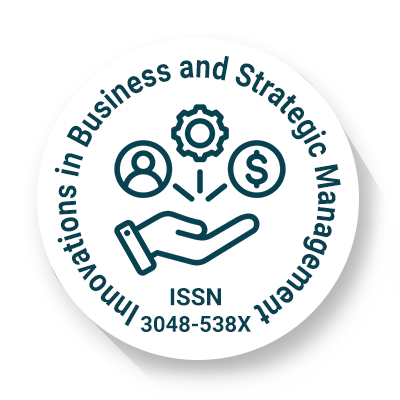
Innovations in Business and Strategic Management
OPEN ACCESS
ISSN: 3048-538X

OPEN ACCESS
ISSN: 3048-538X
Competitive advantage is the secret to long-term profitability in a dynamic and interdependent global economy. A company can outperform its rivals thanks to its unique assets, skills, and competencies. Firms that build a strong competitive advantage can attract more customers, increase profitability, and sustain market dominance in the face of changing industry trends.
A competitive advantage can be obtained through various factors like product innovation, cost leadership, brand reputation, improved customer care, and an ability to tap into scarce resources. Firms that continuously innovate their strategies and adapt to customer needs can strengthen their position and maintain their superiority. By adopting technological innovations, optimizing operations, and gaining insight into consumer preferences, firms can differentiate and create long-term value.
Innovation is one of the most important drivers of competitive advantage. Businesses can reshape industry conventions and attract new clientele by investing in R&D, using new technology, and producing innovative goods and services. Innovation not only propels company expansion but also brand loyalty and client satisfaction.
One of the main factors influencing the attainment of competitive advantage is cost leadership. Companies may offer high-quality goods at competitive prices by streamlining operations, increasing productivity, and keeping production costs low. This strategy aids companies in growing their clientele, improving profitability, and weathering economic downturns. Cost-effective models enable businesses to strategically deploy resources and make investments in future expansion prospects. Building a competitive edge requires a positive brand reputation. Establishing trust through corporate citizenship, ethical behavior, and continuous consumer connection allows businesses to stand out from the competition. A positive brand perception not only increases consumer loyalty, but it also boosts credibility and strengthens a company's market position. Strong bonds and long-term success are the outcomes of businesses that set values that align with those of their target market.
Aside from this, one of the primary factors influencing preserving competitiveness is the client experience. Businesses that prioritize anticipatory support, frictionless interactions, and personalized services are sure to see an increase in customer satisfaction and loyalty. Businesses that use automation, artificial intelligence, and data analytics are better able to understand consumer behavior and offer tailored solutions that adapt to changing circumstances in the ongoing era of digital disruption.
Organizations must be somewhat flexible because the global business environment is always changing. Competitive advantage is not a static position; it is a dynamic process that necessitates continuous improvement and strategic vision. Businesses are better positioned to maintain their leadership positions and support long-term growth when they embrace flexibility, make investments in human capital, and anticipate emerging market trends.
In an increasingly competitive market, maintaining a strong competitive edge goes beyond outperforming rivals—it requires fostering innovation, creating value, and ensuring long-term business sustainability. Organizations that continuously refine their strategies and leverage their strengths are more likely to thrive in a dynamic business environment. Academic research plays a vital role in shaping these strategies, and journals serve as key platforms for advancing knowledge in corporate governance and business management. Innovations in Business and Strategic Management is dedicated to publishing insightful research on governance, leadership, and sustainable business practices, providing valuable perspectives to help businesses navigate evolving market challenges.